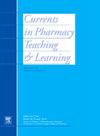Awareness and attitude towards complementary and alternative medicine among pharmacy- and non-pharmacy- undergraduate students: A cross-sectional study from Jordan
IF 1.3
Q3 EDUCATION, SCIENTIFIC DISCIPLINES
引用次数: 0
Abstract
Objective
The present study aimed to evaluate pharmacy students' awareness of Complementary and Alternative Medicine (CAM) to highlight the strengths and weaknesses that need improving in the pharmacy curriculum regarding CAM.
Methods
A questionnaire-based study, conducted at the University of Petra (UOP), Jordan, that compared the knowledge and attitudes towards CAM of pharmacy students with those of non-pharmacy non-health-related students.
Results
A CAM questionnaire was issued to 1230 students, and 1132 completed responses were received. Overall, over two-thirds of students (70 %) were aware of the existence of CAM. As expected, this awareness was higher among pharmacy students than non-pharmacy students (73 % vs. 65 %, p < 0.001) and increased with junior year. Compared to pharmacy students, other faculty students believed CAM is more effective than conventional medicine (CT). Furthermore, pharmacy students' belief that CAM is more effective than CT showed a steady decline within the 5-year study period (33–39 % vs.16–17 %, p < 0.0001). However, the most common reason for believing in CAM among pharmacy students (45 %) was their belief that CAM has fewer side effects compared to 35 % of non-pharmacy students. Of those pharmacy students who did not believe in CAM, almost half stated that there was no scientific evidence of CAM use. Surprisingly, only 16 % of pharmacy students indicated that their CAM source of information was from classes or attended courses during their study versus 69 % from the Internet. Furthermore, the medicinal applications most frequently thought by students to be treatable by CAM were gastrointestinal disorders (56 %) and diseases of the respiratory tract (51 %), whereas the slightest thought to be treated by CAM were endocrine disorders (2 %).
Conclusions
Although pharmacy students' CAM awareness and knowledge are enhanced as they advance in the curriculum, the conceptions that CAM could substitute conventional therapies and that CAM is more effective than conventional therapy are inversely associated with advancement in the curriculum. This latter reversal adjustment suggests the strength of the current curriculum towards conventional therapy. It underscores the need to correct the misconception of CAM by enhancing the awareness of well-researched herbal medicinal preparations. Therefore, the integration of evidence-based phytotherapy courses into the pharmacy curriculum is crucial to fostering a balanced awareness and trust in CAM.
约旦药学和非药学本科学生对补充和替代医学的认识和态度:一项横断面研究。
目的:本研究旨在评估药学学生对补充替代医学(CAM)的认知,以突出药学课程中补充替代医学(CAM)的优势和不足。方法:在约旦佩特拉大学(UOP)进行了一项基于问卷的研究,比较了药学专业学生与非药学专业非健康相关学生对CAM的知识和态度。结果:向1230名学生发放了CAM问卷,收到填写问卷1132份。总体而言,超过三分之二(70%)的学生知道CAM的存在。正如预期的那样,药学专业学生的这种意识高于非药学专业学生(73% vs. 65%)。结论:尽管药学专业学生的CAM意识和知识随着课程的进步而增强,但CAM可以替代传统疗法和CAM比传统疗法更有效的观念与课程的进步呈负相关。后一种逆转调整表明了当前课程对传统疗法的优势。它强调需要通过提高对经过充分研究的草药制剂的认识来纠正对CAM的误解。因此,将基于证据的植物疗法课程整合到药学课程中,对于培养对CAM的平衡认识和信任至关重要。
本文章由计算机程序翻译,如有差异,请以英文原文为准。
求助全文
约1分钟内获得全文
求助全文
来源期刊

Currents in Pharmacy Teaching and Learning
EDUCATION, SCIENTIFIC DISCIPLINES-
CiteScore
2.10
自引率
16.70%
发文量
192
 求助内容:
求助内容: 应助结果提醒方式:
应助结果提醒方式:


